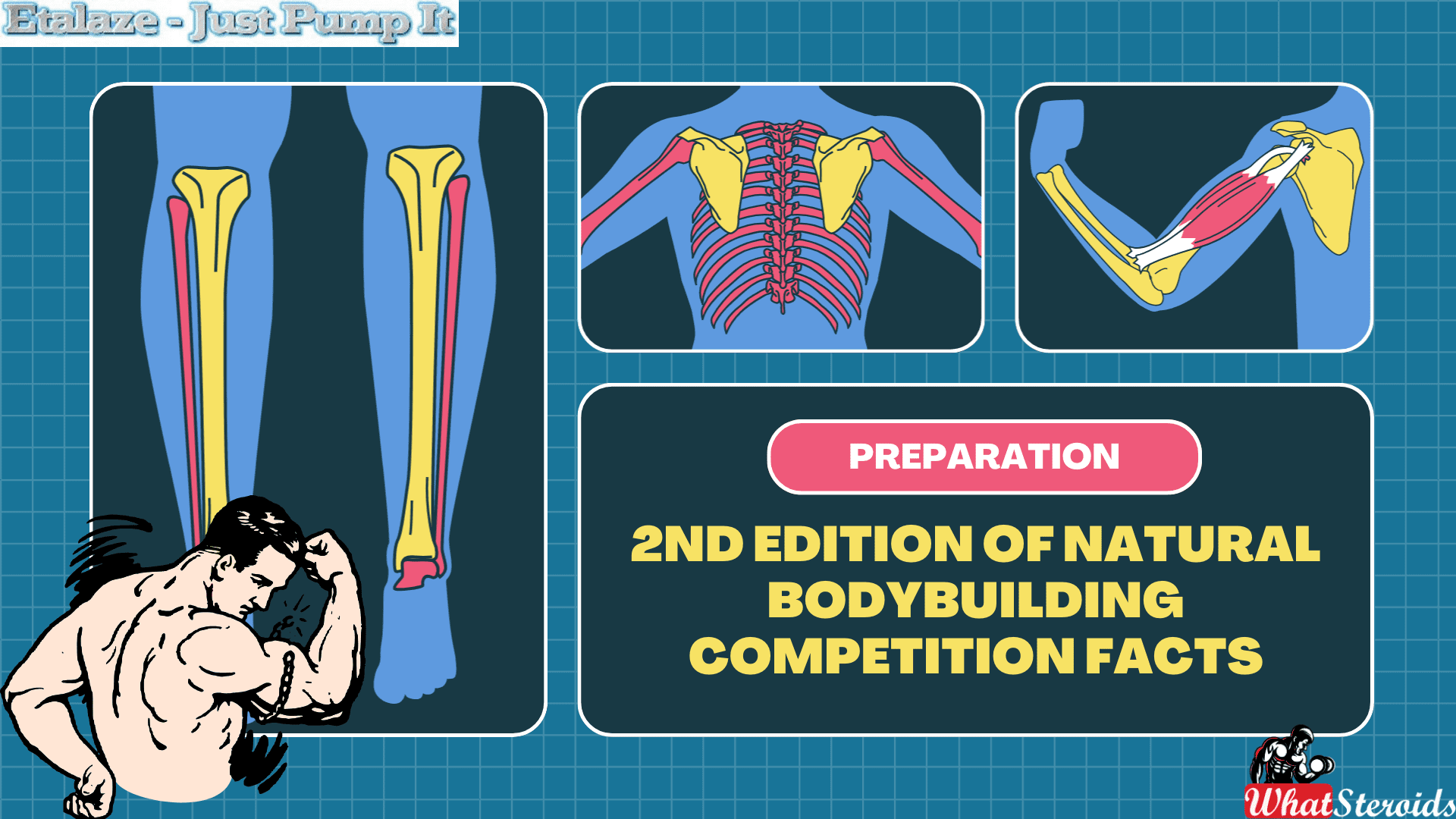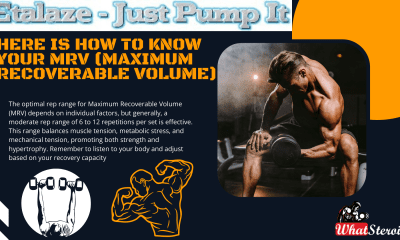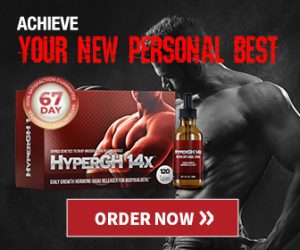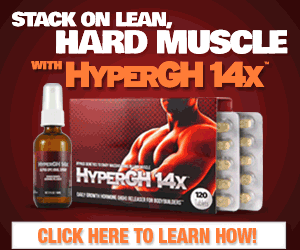Bodybuilding
Anterior Pelvic Tilt Fix for Bodybuilders

There have been many instances of pelvic tilt among people with poor sitting positions or those who sit for many hours. Research has shown that most people with this problem are either office workers or people who spend hours playing computer games, but it also affects bodybuilders. The condition manifests in later stages when it starts affecting several aspects of a person’s life but is barely noticeable when it starts setting in. The anterior pelvic tilt, colloquially referred to as APT, is characterized by an inward curving of the pelvic bone. The person may also show signs of a protruding abdomen. Anterior pelvic is related to two other pelvic conditions: pelvic tilt and lateral pelvic tilt. Although not very common, these other pelvic tilts affect how a person walks, kicks, or runs.
Scientifically, anterior pelvic tilt occurs when there is a slight dislocation or shortening of the pelvis such that the front and back regions of the pelvis are not aligned. That means the person’s walking or running will be affected. Additionally, the person may develop weak abdominal muscles and glutes if the condition is not fixed in its early stages. Some people with pelvic tilt have also reported lower back, knees, and legs pain. The anterior pelvic tilt is also linked to involuntary hip and knee movement. That is not to mention the apparent sign- improper posture.
Anterior Pelvic Tilt Test
How does one know whether they have an anterior pelvic tilt or not? Well, you may not notice it through posture until some time later. However, several scientific tests have been proposed, including the Thomas Test. Here is how to conduct the test:
- Lie on your back, on a sturdy stable, with your legs hanging off the table.
- Raise your left leg and put it on the table. Hold it still with your hand.
- Pull the leg towards your chest slowly until it touches it.
- Check if the back of the other leg is resting on the table.
- Repeat the procedure with the other leg.
If you have a pelvic tilt, the back of the leg hanging off the stable will be slightly lifted off it. You will notice that you must shift to keep it from lifting off the stable. A person with a normal pelvic will not have trouble keeping the leg rested until you release the other.
Anterior Pelvic Tilt Fixes
You can fix a pelvic tilt several ways without necessarily undergoing surgery. Most of these fixes are done with physical exercises. However, you need to be careful with the type/intensity of the exercise if you have back pain. You don’t want to worsen the pain by strenuous exercises that give quick results. Strengthening the muscles will not always fix a pelvic tilt; strengthening the posterior pelvic tilt does. There are a couple of ways you can use to achieve this.
Must Read:: Training Template by Lift Run Bang
1. Press Your Back Against the Ground
The first step in fixing a pelvic tilt is practicing pressing your back against the ground. People with a severe tilt will not find this easy, so it will take a lot of exercise to push your back against the ground. To achieve this easily, you must lie on a sturdy surface that is soft enough for you. Now fold your legs at the knee and straighten your hands on the sides. Remain in that position for as long as you can.
2. Contract your Glutes While Standing
Squeezing your glutes will make your posture appear slightly more natural from some angles. Stand with your feet together and keep your hands relaxed at the sides. Now, push your hips down and back as you stretch your hands in front of you. Go as low as you can and only stop when your back hurts. Take rest for 30 seconds and repeat the procedure. You can do five to 10 rounds every day to master it fully.
3. Avoid Sleeping on Your Stomach
It has been found that sleeping on your stomach will likely extend your front pelvis. It is even worse if you support your head with your hands or pillow. But sleeping on your back makes you comfortable and will ensure you don’t develop a pelvic tilt. You may feel comfortable sleeping with your stomach. You must not make it a habit. If you have to, then don’t do so for long hours. Start sleeping on your side and transition to your back; you will master it with time.
Must Read:: The Importance of Sleep for Bodybuilders
4. Perform More Hamstring Exercises
These exercises are meant to stretch muscles found in your lower back. The exercises may not necessarily make APT go away, but they’ll ensure you have a painless back, even with the condition. Additionally, hamstring exercises ensure your muscles don’t lose their flexibility when you assume the same posture for a long. Here is how to perform a simple hamstring exercise:
- Look for a standard-height table.
- Sit on it and straighten your back.
- Stretch one leg forward and support it with your hand at the back of the knee. Hold in that position for 30 seconds.
- Repeat with the other leg.
- Do 10 to 15 sets every day.
5. Half-Kneeling Stretches.
Half-kneeling stretches will increase the flexibility of your hip joints and strengthen lower back muscles. The stretches are ideal for people with anterior pelvic tilt because you allow your back to move according to the knee’s movement. Here is how to perform a simple half-knee stretch:
- Go down on your knees.
- Straighten your back.
- Lunge with one leg as the other rests on the floor.
- Tighten your abdominal muscles as you squeeze your glutes.
- Move your pelvis forward until you feel the stress.
- Rest for 30 seconds and repeat with the other leg lunged.
- Do 10 to 15 sets of exercises every day.
6. Roll the Foam
Foam rolling is one of the most popular exercises in our gyms. Little do most people know it can be used to fix several physical conditions. Rolling the form on your entire back will relax the back muscles and fix the anterior pelvic tilt. To perform the exercise, find foam and lie on your back, your hands hanging freely and your feet on the flow. Slowly roll the foam from the middle to the lower back as long as you’re comfortable.
7. Rear Leg Raise Exercises
Weak heap and abdominal muscles are some of the symptoms of anterior pelvic tilt. Rear leg raise exercises help tighten these groups of muscles, thus helping you improve your stability. The exercises may be strenuous, but you don’t have to do them intensely. Follow this procedure to perform them.
- Start by getting to all fours on an exercise mat or carpet.
- Take a deep breath and exhale, squeezing your stomach muscles.
- Take the back of your right knee with the right hand, then tilt towards the left.
- Slowly pull the leg forward until you feel the tension.
- Repeat with the left leg.
As you perform the exercises, remain in the position for 20 seconds. Also, take 30-second rests between rounds to avoid getting fatigued quickly. You can do 5 sets of these exercises every day.
8. Simple Squats
Squats are a great way of exercising, but they can also help with APT. There is nothing much to explain about squats because almost everyone has done it at some point. But people with this condition are not doing them right, so we will explain.
- Stand upright with your legs slightly apart.
- Stretch your hands forward, perpendicular to your body.
- Slowly push your hips back and down until you feel the tension.
- Remain in that position for 15 seconds.
- Rest for 10 seconds and go again.
Make sure you do the squats frequently to realize results. Most importantly, only do rounds you can manage to avoid putting a strain on your lower back.
9. Hip Muscle Flexing Stretches
These exercises are meant to strengthen the hip muscles but can also help with lower back pain. However, you must be careful not to strain that region because it could weaken it further. The exercises are simple, but you need to do them consistently, however accessible they may seem.
- Stand upright and stretch your hands outwards.
- Put your right leg forward and make sure the knee makes a right angle.
- Move your body forward towards the knelt knee and tighten your stomach muscles.
- Keep moving until you feel the tension.
- Remain in that position for 15 seconds.
- Change to the left leg and repeat the procedure.
- Do 10 to 15 sets.
Related Article:: Get Rid of Stretch Marks During the Steroid Cycle or Post Steroid Cycle?
When to See a Doctor?
Anterior pelvic tilt can interfere with many aspects of your life if it goes unchecked. For instance, the condition could rob you of your favorite sport. Additionally, most people who develop a pelvic tilt at later stages tend to lose confidence. If the condition happens to reach that far, then it is about time you booked an appointment with a doctor. The doctor may not necessarily recommend surgery but will help you choose exercises most appropriate for your condition. That will help you avoid extreme exercises that do more harm than good.
Overall
It is essential to know that anterior pelvic tilt is not a disability but a severe case that may significantly affect a person’s life. The exercises discussed above can help you manage its more severe symptoms, such as back, knee, and hip pain. The exercises will also prevent the weakening of the stomach and hip muscles caused by APT.
Bodybuilding
Mastering Bodybuilding in 2025: Top Fitness Tips for Success

Bodybuilding is more than just a sport; it's a lifestyle that requires dedication, discipline, and a thorough understanding of fitness principles. As the world of fitness continues to evolve, bodybuilders must stay updated with the latest trends, techniques, and scientific advancements to achieve their goals. In 2025, several innovative approaches are redefining bodybuilding. Here are essential fitness tips for bodybuilders to excel this year.
Read More: Bodybuilder Winter Clothing: Staying Warm and Stylish
Embrace Technology-Driven Workouts
In 2025, technology plays a significant role in bodybuilding. Wearable devices, fitness apps, and virtual reality (VR) training are now integral components of an effective workout regimen.
Wearable Devices
Modern wearables track everything from heart rate and sleep patterns to muscle activation and caloric expenditure. Utilize these devices to monitor your progress and make data-driven adjustments to your training and nutrition plans.
Fitness Apps
Leverage fitness apps for customized workout plans, progress tracking, and virtual coaching. Many apps now incorporate artificial intelligence to provide personalized feedback and recommendations.
Virtual Reality Training
VR technology offers immersive workout experiences, allowing bodybuilders to simulate different training environments and scenarios. This can enhance motivation and add variety to your routine.
Focus on Functional Strength
While hypertrophy (muscle growth) remains a primary goal, functional strength is gaining importance. Functional strength training improves overall performance, reduces the risk of injury, and enhances daily activities.
 Check Out Our1 4 Weeks Quality Strength & Lean Muscles
Check Out Our1 4 Weeks Quality Strength & Lean Muscles
Compound Movements
Incorporate compound exercises like squats, deadlifts, and bench presses. These movements engage multiple muscle groups and joints, promoting balanced strength development.
Core Stability
Prioritize exercises that strengthen the core, such as planks, Russian twists, and leg raises. A strong core supports better lifting mechanics and reduces the risk of lower back injuries.
Optimize Nutrition for Muscle Growth and Recovery
Nutrition is the cornerstone of successful bodybuilding. In 2025, the focus is on personalized nutrition plans tailored to individual needs and goals.
Protein Intake
Ensure adequate protein intake to support muscle repair and growth. Aim for 1.6 to 2.2 grams of protein per kilogram of body weight per day, depending on your training intensity and goals.
 Click Here to Buy SynthaTrope By SynthaPharma
Click Here to Buy SynthaTrope By SynthaPharma
Nutrient Timing
Pay attention to nutrient timing to maximize muscle recovery and growth. Consume protein and carbohydrates within 30 minutes post-workout to replenish glycogen stores and kickstart muscle repair.
Supplements
Utilize supplements wisely. Creatine, branched-chain amino acids (BCAAs), and omega-3 fatty acids are popular choices for enhancing performance and recovery.
Prioritize Mental Health and Mindfulness
Mental health is increasingly recognized as a critical component of overall fitness. Incorporating mindfulness practices can improve focus, reduce stress, and enhance performance.
Meditation
Incorporate meditation into your daily routine to reduce stress and improve mental clarity. Mindfulness meditation can enhance your mind-muscle connection during workouts.
Visualization
Use visualization techniques to mentally rehearse your workouts. Visualizing successful lifts and achieving your goals can boost confidence and motivation.
Rest and Recovery
Prioritize rest and recovery to prevent burnout and overtraining. Ensure you get 7-9 hours of sleep per night and incorporate rest days into your training schedule.
Leverage Advanced Training Techniques
Advanced training techniques can help break through plateaus and stimulate muscle growth. In 2025, several methods are gaining popularity among bodybuilders.
Blood Flow Restriction (BFR) Training: BFR involves restricting blood flow to the muscles during low-intensity exercises. This technique can enhance muscle growth and strength without the need for heavy weights.
Eccentric Training: Focus on the eccentric (lowering) phase of exercises. Eccentric training can stimulate greater muscle damage and growth compared to traditional concentric movements.
Periodization: Implement periodization into your training plan. Varying the intensity, volume, and type of exercises can prevent plateaus and ensure continuous progress.
Incorporate Recovery and Mobility Work
Recovery and mobility are essential for preventing injuries and maintaining optimal performance. In 2025, bodybuilders are paying more attention to these aspects of training.
Foam Rolling and Myofascial Release: Use foam rollers and massage balls to release muscle tightness and improve flexibility. Regular myofascial release can reduce soreness and enhance recovery.
Stretching: Incorporate dynamic stretching before workouts and static stretching after workouts. Stretching improves range of motion and prevents muscle imbalances.
Cryotherapy and Hydrotherapy: Explore recovery techniques like cryotherapy (cold therapy) and hydrotherapy (water therapy) to reduce inflammation and accelerate muscle recovery.
Engage in Continuous Learning and Community Building
The fitness industry is constantly evolving, and staying informed is crucial for success. Engage in continuous learning and connect with the bodybuilding community for support and motivation.
Educational Resources: Read books, watch videos, and attend seminars to stay updated on the latest research and trends in bodybuilding.
Community Engagement: Join online forums, social media groups, and local bodybuilding clubs. Sharing experiences and knowledge with fellow bodybuilders can provide valuable insights and encouragement.
Professional Guidance: Consider working with a certified personal trainer or coach. Professional guidance can help you optimize your training and nutrition plans, ensuring you're on the right track.
With your FB Plus subscription or active FB Plus Pass, you now have access to 124 weeks of our most popular workout programs, which typically sell for $10-$30 each. Additionally, our popular 4-week Meal Plan is included. This is on top of the 38 Challenges and Programs that are already available to Plus members.
We've also introduced a new feature that many of you have requested. To assist you in choosing your next program, you can now preview each day of any program from its detail view. This feature lets you see all the included workout videos and content before you schedule it, ensuring you know exactly what to expect.
Conclusion
In 2025, bodybuilding is more than just lifting weights; it's a holistic approach to fitness that encompasses technology, nutrition, mental health, and advanced training techniques. By embracing these fitness tips, bodybuilders can achieve their goals, stay injury-free, and enjoy a fulfilling fitness journey. Remember, consistency and dedication are key to success in bodybuilding. Stay committed, keep learning, and most importantly, have fun on your path to becoming the best version of yourself.
Bodybuilding
Top Video Games for Bodybuilders in 2025

There are several video games that can be great for bodybuilders, combining fitness and fun! Here are some of the best options:
Ring Fit Adventure (Nintendo Switch)
The game uses the Ring-Con and Leg Strap to guide you through various exercises and adventures. It's a fun way to get a full-body workout while playing a game.
Fitness Boxing 2: VR Boxing Remastered (PlayStation VR)
It offers a full-body boxing workout with a variety of punches and combos. It's a great way to improve your fitness while enjoying a virtual boxing experience.
Must Read: Marvel-Inspired Training Clothing on Amazon
Just Dance 2024
This popular dance game gets you moving to the beat with a variety of songs and dance routines. It's a fun way to burn calories and improve your coordination.
Zumba Fitness
Burn It Off (Nintendo Wii): This game offers a fun and energetic Zumba workout, perfect for those who enjoy dancing and want to get a good cardio workout.
Yoga for Beginners
If you're looking for a more relaxing workout, yoga games can help improve flexibility and reduce stress. Many of these games offer guided yoga sessions that you can follow along with.
Gym Tycoon
This game lets you build and manage your own gym, complete with various workout equipment and fitness classes. It's a great way to learn about different exercises and how to create effective workout routines.
The Sims 4: Fitness Stuff Pack
This expansion pack for The Sims 4 adds fitness equipment and activities to the game, allowing you to improve your character's fitness and join the athlete career.
Grand Theft Auto: San Andreas
While not a traditional fitness game, this classic game includes bodybuilding activities that can help your character gain muscle and improve fitness.
Knockout Home Fitness (Nintendo Switch)
This game offers a variety of boxing workouts that can help improve your strength and endurance.
Gym Simulator 24 (PC)
In this simulation game, you can build and manage your own fitness empire, creating workout routines and managing gym equipment.
Let's Get Fit (Nintendo Switch)
This game focuses on pure workouts, allowing you to set programs and follow along with digital trainers for a customized fitness experience.
Beat Saber (VR)
A popular VR game where you slash blocks to the beat of the music, providing an intense full-body workout.
Synth Riders (PlayStation VR)
This game combines freestyle dance and fitness, offering high-tempo tracks and multiplayer modes for a fun and energetic workout.
Yoga Master (PlayStation)
Designed by professional yoga coaches, this game offers a variety of yoga lessons and poses to improve flexibility and reduce stress.
Les Mills Bodycombat (PlayStation VR)
A martial arts-inspired workout game with a range of workout plans and coaching to keep you motivated.
OhShape Ultimate (PlayStation VR)
This game provides a full-body cardio workout with six sessions and two difficulty levels, designed to engage every part of your body.
These games offer a mix of cardio, strength, and flexibility workouts, making them great additions to your fitness routine.
Related Article: Supplemental Breast Milk for Bodybuilders
Bodybuilding
2nd Edition of Natural Bodybuilding Competition Facts

Natural bodybuilding competitions are designed to promote and celebrate athletes who build their physiques without the use of performance-enhancing drugs. These events emphasize fair play, health, and the natural development of muscle mass and definition.
The second edition of natural bodybuilding competitions has gained momentum globally, particularly focusing on drug-free athletes. These competitions are hosted by various organizations like the INBA/PNBA (International Natural Bodybuilding Association/Professional Natural Bodybuilding Association) and OCB (Organization of Competitive Bodybuilders).
In 2024, several notable events have been planned, including the INBA Natural Universe and INBA World Cup, both of which emphasize natural bodybuilding through rigorous drug testing policies. These events aim to showcase competitors who adhere to strict drug-free protocols, and winners often earn pro cards allowing them to compete in higher-level professional competitions.
These competitions focus on categories like men's bodybuilding, classic physique, and women's figure and bikini, among others. Athletes undergo polygraph and urine tests to ensure compliance with natural bodybuilding standards. The winners often receive medals, trophies, or pro status
-

 Steroids2 years ago
Steroids2 years agoVOX Testing: Why Bodybuilders Must Have It Tested Regularly
-

 Steroids2 years ago
Steroids2 years agoShavers and Other Body Grooming Equipment for Bodybuilders In 2023
-

 Steroids2 years ago
Steroids2 years agoChatGPT and Other Avenues to Find Great Bodybuilding Coaches
-

 Steroids2 years ago
Steroids2 years agoBest Oil Recommendations Before Competition for Subtle Shimmer
-

 Steroids2 years ago
Steroids2 years agoPowerlifting Vs Power Building: Find Out the Big Difference and When to Shift Between the Two
-

 Nutrition1 year ago
Nutrition1 year agoEverything Nutritional Food: What’s Too Much Or Too Little
-

 Bodybuilding Products12 months ago
Bodybuilding Products12 months agoTelmisartan In Bodybuilding: An Expert’s Advice
-

 Anabolic Steroids1 year ago
Anabolic Steroids1 year agoLegality of Anabolic Steroids In Latin America
-

 Beginners2 years ago
Beginners2 years agoTren Cycle for Beginners
-

 Bodybuilding1 year ago
Bodybuilding1 year agoList of FDA-Approved Peptides
-

 Bodybuilding2 years ago
Bodybuilding2 years agoCompetition Prep Cycle for Pro Bodybuilders
-

 Bodybuilding1 year ago
Bodybuilding1 year agoChia Seeds in A Bodybuilder’s Diet: An Expert’s Advice
-

 Anabolic Steroids11 months ago
Anabolic Steroids11 months agoHow Much Do You Know About B-AET? A Fat Burner You’ve Been Missing
-

 Bodybuilding7 months ago
Bodybuilding7 months agoPrimal Movements: Our Ultimate Guide for Maximum Results
-

 Steroids11 months ago
Steroids11 months agoAnadrol Cycle: Benefits, Doses, Alternatives, etc.
-

 Anabolic Steroids8 months ago
Anabolic Steroids8 months agoJoint Stiffness: How to Manage It While on AAS
-

 Product Reviews10 months ago
Product Reviews10 months agoTop Vitamins for Skin Health
-

 Steroids9 months ago
Steroids9 months agoOmnitope (Oxytocin)
-

 Bodybuilding1 year ago
Bodybuilding1 year agoHow Much Is Too Much Cardio? Understanding Heart Rate Zones
-

 Bodybuilding8 months ago
Bodybuilding8 months agoHow Effective is Bone Broth for Recovery?
-

 Steroids10 months ago
Steroids10 months agoMajor Bodybuilding Peptides Explained
-

 Bodybuilding9 months ago
Bodybuilding9 months agoHormone Replacement Therapy (TRT) Cycle Guide
-

 Steroids8 months ago
Steroids8 months agoSleeping Positions for Effective Muscle Recovery
-

 Anabolic Steroids1 year ago
Anabolic Steroids1 year agoStart The New Year Strong With These Tips
-

 Bodybuilding10 months ago
Bodybuilding10 months agoHere Is How To know Your MRV (Maximum Recoverable Volume)









 Click here to buy 1-Test Cyp/DHB 100 by Dragon Pharma
Click here to buy 1-Test Cyp/DHB 100 by Dragon Pharma









